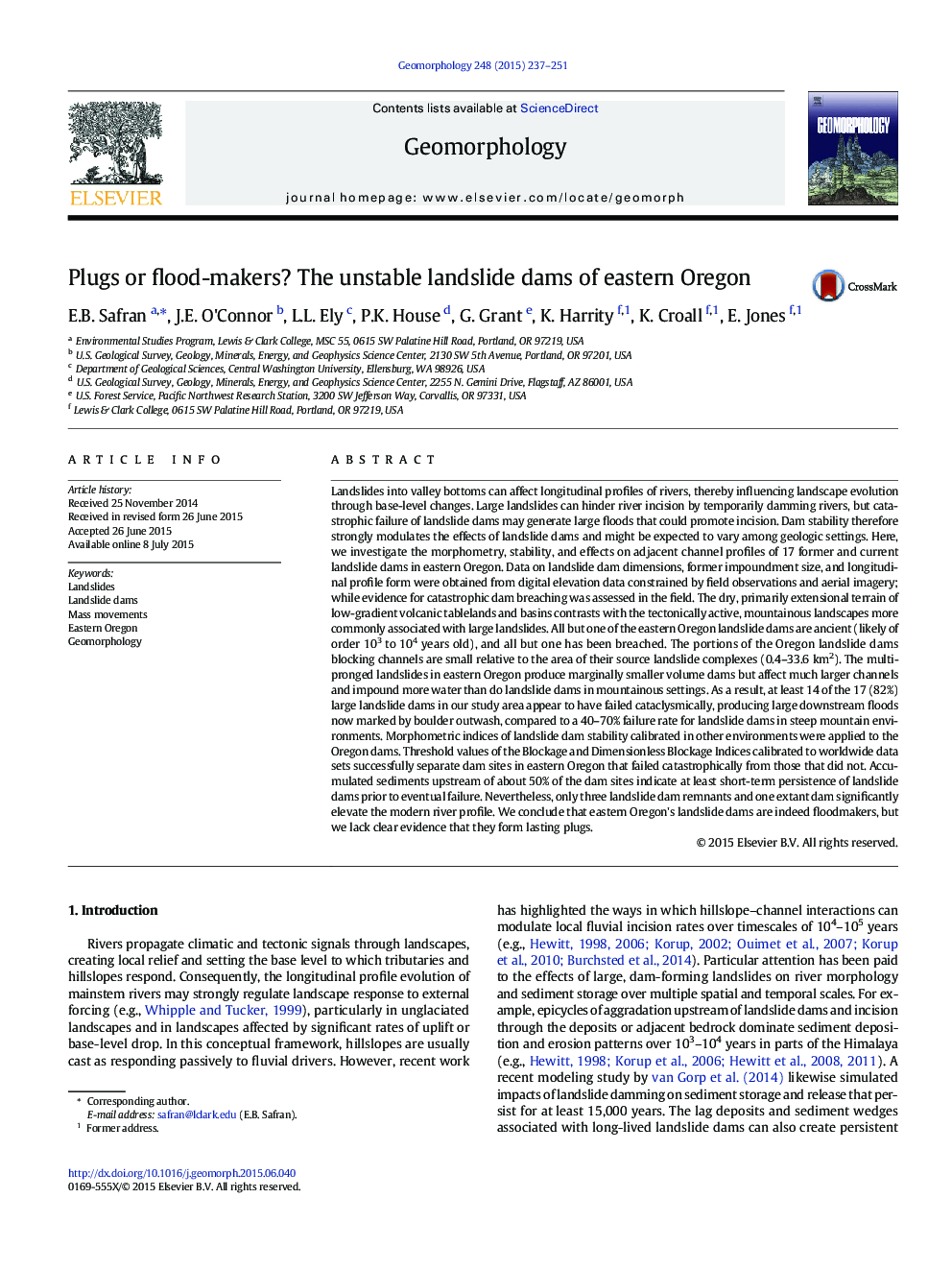| کد مقاله | کد نشریه | سال انتشار | مقاله انگلیسی | نسخه تمام متن |
|---|---|---|---|---|
| 6432058 | 1635401 | 2015 | 15 صفحه PDF | دانلود رایگان |
- We assess the morphometry and stability of 17 landslide dams in eastern Oregon.
- 82% of dams failed catastrophically, sediment accumulated behind up to 50% of them.
- Dam size to impounded water ratio is small relative to other, mountainous settings.
- This reflects regional physiography and controls on landslide distribution and style.
- Evidence is stronger that eastern Oregon dams are “flood-makers” vs. “plugs”.
Landslides into valley bottoms can affect longitudinal profiles of rivers, thereby influencing landscape evolution through base-level changes. Large landslides can hinder river incision by temporarily damming rivers, but catastrophic failure of landslide dams may generate large floods that could promote incision. Dam stability therefore strongly modulates the effects of landslide dams and might be expected to vary among geologic settings. Here, we investigate the morphometry, stability, and effects on adjacent channel profiles of 17 former and current landslide dams in eastern Oregon. Data on landslide dam dimensions, former impoundment size, and longitudinal profile form were obtained from digital elevation data constrained by field observations and aerial imagery; while evidence for catastrophic dam breaching was assessed in the field. The dry, primarily extensional terrain of low-gradient volcanic tablelands and basins contrasts with the tectonically active, mountainous landscapes more commonly associated with large landslides. All but one of the eastern Oregon landslide dams are ancient (likely of order 103 to 104Â years old), and all but one has been breached. The portions of the Oregon landslide dams blocking channels are small relative to the area of their source landslide complexes (0.4-33.6Â km2). The multipronged landslides in eastern Oregon produce marginally smaller volume dams but affect much larger channels and impound more water than do landslide dams in mountainous settings. As a result, at least 14 of the 17 (82%) large landslide dams in our study area appear to have failed cataclysmically, producing large downstream floods now marked by boulder outwash, compared to a 40-70% failure rate for landslide dams in steep mountain environments. Morphometric indices of landslide dam stability calibrated in other environments were applied to the Oregon dams. Threshold values of the Blockage and Dimensionless Blockage Indices calibrated to worldwide data sets successfully separate dam sites in eastern Oregon that failed catastrophically from those that did not. Accumulated sediments upstream of about 50% of the dam sites indicate at least short-term persistence of landslide dams prior to eventual failure. Nevertheless, only three landslide dam remnants and one extant dam significantly elevate the modern river profile. We conclude that eastern Oregon's landslide dams are indeed floodmakers, but we lack clear evidence that they form lasting plugs.
Journal: Geomorphology - Volume 248, 1 November 2015, Pages 237-251
